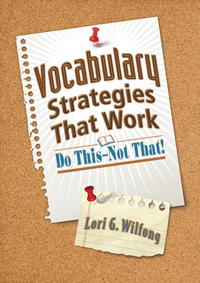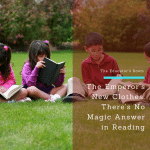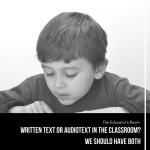[fusion_builder_container hundred_percent=”yes” overflow=”visible”][fusion_builder_row][fusion_builder_column type=”1_1″ background_position=”left top” background_color=”” border_size=”” border_color=”” border_style=”solid” spacing=”yes” background_image=”” background_repeat=”no-repeat” padding=”” margin_top=”0px” margin_bottom=”0px” class=”” id=”” animation_type=”” animation_speed=”0.3″ animation_direction=”left” hide_on_mobile=”no” center_content=”no” min_height=”none”]
In Vocabulary Strategies That Work: Do This-Not That! Lori G. Wilfong does an amazing job of bringing to light the importance of students actually learning vocabulary and making it useful instead of memorizing and purging after testing. This book is filled with research-based techniques on how to help students internalize vocabulary, including many different graphic organizers geared toward different learners.
I have a small group of seventh and eighth grade students whom I have been taking through an intensive study of Greek and Latin roots, prefixes and suffixes this year. We are now at the application process of utilizing this in-depth foundation of the English language where the students are given unfamiliar English words that they need to be able to break apart using prior knowledge. Even though this group has a good grasp of what they need in order to decipher their weekly vocabulary list, I have noticed them falling into a bad habit of using rote memory for the week. I felt like I needed to figure out something quickly in order to break them of this habit and to give meaning to the words so the students would be more apt to not only remember them, but to use them.
This book provided me the opportunity to experiment with a few of the techniques that Wilfong has determined to be beneficial for upper elementary through high school students. I loved that these techniques were based on learning styles of students: for my small group, I was able to explain the techniques and allow the students to choose which techniques were most meaningful to him or her as an individual instead of grouping everyone together and expecting learning to happen across the board. My students all agreed that it made much more sense to them being able to use their own definitions and making the words meaningful. They also enjoyed the idea of being in control of the way they learned the words and how individualized the entire process was.
Wilfong emphasizes the importance of selecting words that we teach, and gives some amazing methods of choosing words that are used across the curriculum so students are not inundated with a ton of words each week in several classes. This book also provides many strategies that classroom teachers can easily apply to not only engage the students in the understanding of vocabulary, but assessing them in comprehension, writing and usage in speaking. She has included all the Common Core Connections as well.
Wilfong begins with a list of common mundane techniques that most of us have been guilty of doing in the classroom, such as copying definitions from the dictionary. She balances these ‘don’ts’ with a list of ‘do’s’. After each updated strategy, there is a description of the research that shaped that specific idea. The author then takes the reader through not only several different techniques for each, but also has a reflection area for the teacher to make notes and record observations and outcomes when implementing the new strategy.
Wilfong presents the material in Vocabulary Strategies That Work: Do This-Not That! in a way that allows the reader to implement these new strategies quickly by making a quick assessment of the current way vocabulary is being taught in the classroom and ‘tweaking’ the method to fit a more appropriate, meaningful and engaging way for their students to learn.
—
Disclaimer: This book was provided to The Educator’s Room free of charge by the publisher. However, neither The Educator’s Room nor the reviewer received any compensation for this review. The opinions contained in this review are those of the reviewer alone and were written free of any obligation or agreement with the publisher. If you have any questions regarding book reviews, see our full disclaimer or contact the Book Review Editor.[/fusion_builder_column][/fusion_builder_row][/fusion_builder_container]






I have to thank you for the efforts you have put in penning
this website. I’m hoping to view the same high-grade content from you in the future as well. In truth, your creative writing abilities has motivated me to get my own, personal site now 😉